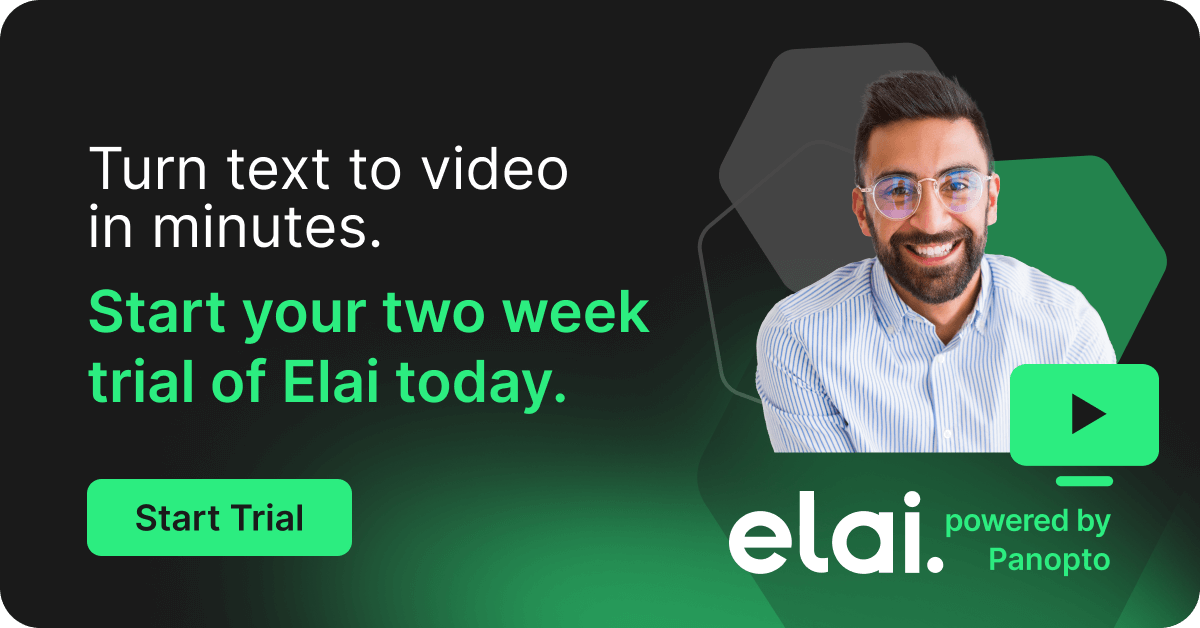- Remote Work
How Qualcomm Wireless Academy is Scaling eLearning to Expand Access to Education

Qualcomm products mentioned within this post are offered by Qualcomm Technologies, Inc. and/or its subsidiaries.
Qualcomm Wireless Academy (QWA) is a world-class wireless education institution, training tens of thousands of learners over the past 17 years. Developed by the engineers creating Qualcomm Technologies’ own cutting-edge solutions and solving real-world wireless challenges, the depth and breadth of QWA’s curricula are unparalleled in the industry. Powered by Panopto, QWA offers 80-100 courses per year reaching learners in 24 countries and has more than doubled their users between 2020 and 2021.
We sat down with QWA’s Senior Director of Program Management Vikram Malhotra to discuss lessons learned from the pandemic, advice for strengthening training programs in a hybrid world, and the future of learning and development (L&D).
Panopto: It’s been a transformational few years for L&D leaders. How were your training programs impacted by the COVID-19 pandemic?
Malhotra: COVID-19 certainly accelerated our movement into online learning. QWA offers instructor-led training, course material, and eLearning (courses taken entirely online), but traditionally, in-person training has been our core focus, with supplementary eLearning components.
We were lucky to already have a relationship with Panopto that primed us to adapt to the boom in online learning and switch to virtual instructor-led training. With Panopto’s support, we relaunched our eLearning portfolio to encompass over 160 hours and 50 courses of deep 5G training, something we’re very proud of. We were able to embrace the eLearning paradigm much quicker.
How does QWA deliver their training today?
Today, we’re seeing a great need for asynchronous training so we offer a combination of asynchronous, searchable access to material as well as recorded, real-time dialogue with instructors and SMEs.
We kick-start every eLearning course with synchronous instructor introductions, before providing training material for asynchronous engagement. Our instructors are available for real-time discussion at certain points throughout the course, as well. We feel this combination of hand-holding and independent study is a winning combination and learner feedback has been stellar.
What surprised you about this shift to distributed learning?
We were really surprised by how quickly eLearning picked up, how easily it was adopted, and how seamlessly it became our mainstream product.
What makes our training so unique is that all of our instructors at QWA are actually working Qualcomm Technologies subject-matter expert engineers. Our courses are developed and presented by the very people helping invent the technology they’re teaching.
Without being professional trainers, our instructors successfully invented, adapted, and changed how they communicate and teach with tools like Teams, Zoom, and Panopto, leading us into this new world of remote and hybrid training. We were able to continue delivering the depth, breadth, and availability of our technical training.
What trends and changes are you seeing in L&D?
I see three important trends in the evolution of training: technological innovation, improving human connection, and expanding scale and access.
Firstly, training managers need to keep an eye on changing technology, both on the learner side and the instructor side. Listen to your learners and fully understand your audience’s needs and preferences. For example, people are increasingly learning on mobile devices, so online learning content must be fully optimized for mobile as well. At QWA, we’re evaluating everything from the impact of AR and VR in presenting information, to how to make a very technical learning experience more delightful and digestible, to how we can better measure learning outcomes using technology.
Secondly, one of the greatest challenges facing L&D leaders right now is how to incorporate the human touch into online learning experiences. We feel that human interaction between teachers and learners is essential to the long-term understanding of deeper material. This doesn’t just mean real-time communication. Technology is opening up so many exciting avenues for making this human connection easier and more delightful, such as through asynchronous video collaboration. L&D is just beginning to explore how technology and human connection can coexist in an innovative way, and I believe we can dramatically enhance this to offer the best possible learning experience to students.
Lastly, the success of online and distributed learning has demonstrated the potential for expanding access and inclusion at scale. Technological advancement can help democratize technology training and increase availability for underprivileged and underrepresented populations. There’s a real opportunity to be more inclusive as online training scales.
We are very excited about the future of technology training. At Qualcomm Technologies innovation is in our DNA, and we are working with leading technology companies like Panopto to explore new, cutting-edge solutions to improve how we share knowledge. We feel set up to do some exciting things in this space.
Read our case study with Qualcomm Wireless Academy to learn more about how they use Panopto to scale eLearning.




